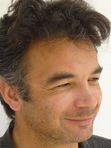Edoardo Albert's Blog, page 50
August 1, 2020
Adventures in Bookland: The Night Land by William Hope Hodgson
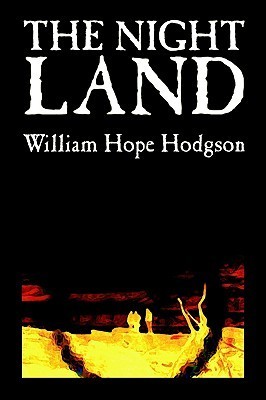 The Night Land by William Hope Hodgson
The Night Land by William Hope HodgsonChannelling my inner football pundit, if ever there was a book of two halves, this is it. As to the content of those two halves, the subtitle of The Hobbit describes it perfectly: there and back again.
But this is also a book that is difficult to review as it was both one of the most extraordinary and one of the worst books I’ve ever read – although the extraordinariness outweighed the bad sufficiently to pull me through to the ending, even though the second half of the book (the back again) was significantly worse than the first half (the there).
It’s also a book whose influence has been substantial. Its narrative structure was stolen wholesale by Olaf Stapledon for his extrapolation of humanity’s future, Last and First Men and its vision of the future has inspired a whole tranche of writers.
So, let’s say something about The Night Land. It begins in some undetermined but vaguely early modern kingdom where a young man of low station falls in love with a princess, who after some trials returns his love, and they are married, blissfully happy until the princess dies in childbirth and the unnamed narrator is stricken with grief. Then, in his grief, a message, an intimation from the far future reaches back to him, of his own soul reborn into the last age of mankind, when all humanity has retreated to its final redoubt, a huge pyramidal structure, to hold against the obscure but terrifying monsters that plague the Night Land – for the sun has gone out and all is dark. But when I say all humanity, it turns out that this is not the case: there is another colony, holding out against the Night, and among its residents is the reincarnation of the narrator’s lost love.
Mirdath the Beautiful is her name and the narrator leaves the safety of the Last Redoubt in search of her (the there). This part, as the narrator travels through one of the strangest, most intensely imagined landscapes ever committed to paper, is the strongest part of the book, as the deep horror of this haunted land drags the reader into the story: it’s an extraordinary imaginative exercise in an almost physical darkness.
But finally reaching the other redoubt, our narrator finds that it has fallen to the forces of the night. However, he finds the reincarnation of Mirdath the Beautiful and then begins the back again. Here is where the story drags, firstly because they are literally going back over the same footsteps and with largely the same dangers and obstacles, but secondly and worse because of the turgidity of the love story – yes, we know she is the most beautiful and lovely woman in the world but there is a limit to how often we need to be told that as readers, that limit being reached before they have managed to cover more than one tenth of the journey home.
So, I confess, the back again part I read with the aid of a fair amout of skipping – whenever it returned to another bout of mutual mooning, or teenage squabbling (with a weird overlay of corporal punishment) I turned the page – but having travelled so far with our narrator, I wanted to see him home again. And they make it! Back to humanity’s final refuge, holding out against monsters and evils too strange to even describe, until it too falls and the night rules all.
The whole thing is written in repetitive, cod-17th century prose, however I found that less of an issue than the irritation with the cooing love couple.
But the vision – ah, the vision, of the earth in its desuetude and the final struggle of humanity against the night…
There are few books that can overcome so many problems with their style and their plot, but this is one of them. I will remember it long after many ‘better’ books.
The post Adventures in Bookland: The Night Land by William Hope Hodgson appeared first on Edoardo Albert.
June 10, 2020
YouTube Warriors
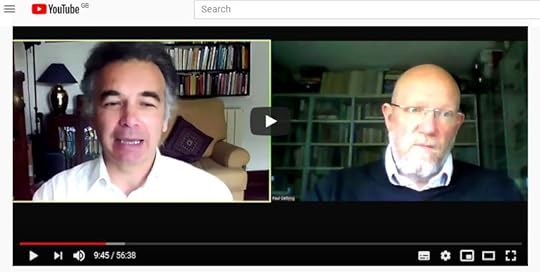
We’re on YouTube! The talk Paul and I gave about the Warrior and all things Anglo-Saxon is now up on YouTube so if you missed it you can see the whole thing here:
https://www.youtube.com/watch?v=qG1UmIRbfF4&t=585s
The post YouTube Warriors appeared first on Edoardo Albert.
June 8, 2020
Webinar Q&A

There were many more questions than we had time to answer during our talk for the York Festival of Ideas. But luckily, we have all the questions that were submitted during the webinar and here are the answers!
Warrior: A life of war in Anglo-Saxon Britain – Saturday 7 June 2020, 1.00pm
York Festival of Ideas 2020 Online
Audience Questions, captured from the Zoom Webinar:
Stan Tan 01:25 PM
Hello from Singapore!
What is a “Bowl Hole” / why is the “Bowl Hole” termed as such?
Answer: Because it is a bowl shape: a depression amid the surrounding sand dunes.
Geoff 01:25 PM
Would the bodies buried face down with legs raised maybe infer a disposal rather than a burial?
Answer: we go into this in some detail in the book but in short, there are two explanations advanced for this type of burial: that it’s a sign of the person buried being in some form of disgrace or that, with the bloating that occurs in dead bodies and the corpse being put into the grave simply wrapped in a shroud, that it can be impossible for the burial party to know which way up they were burying the body.
Jack 01:37 PM
Given the classification of “warrior” to the finds and the idea they are elites are there any traces of this in their skeleton? healed broken bones or sign of a violent death etc?
Answer: Yes, there are. We go into this in detail in the book, but some of the skeletons show clear evidence of a very violent death: I am thinking in particular of one body where the skeleton was basically cut diagonally in half, from shoulder to waist.
Beverley Hallam 01:47 PM
What evidence can be gleaned about diet?
Answer: both direct and indirect. Remains of various foods have been excavated at Bamburgh, indicating a protein-rich diet with much meat eaten and various exotic imported foodstuffs, ranging from wild crane to lentils. The bones of the people excavated are uniformly free of the stress marks that indicate periods of starvation, so they were a well-fed and wealthy elite. Among the men, there is more evidence of tooth decay than among the women, which may be the result of drinking lots of sweet, and very alcoholic, mead.
Chris U 01:49 PM
Was there any evidence of cause of death on any of the skeletons?
Answer: there are some skeletons with clear evidence that they died violently, including one unfortunate man who was cut diagonally in half, from shoulder to waist.
Ruth 01:21 PM
Don’t forget the story of Grace Darling too. Women of the North East ….. strong women!
Answer: Indeed! There is an excellent Grace Darling Museum in the village.
Anonymous Attendee 01:25 PM
Why is it called the Bowl Hole?
Answer: because it’s shaped like a bowl!
Raffi Thomas 01:31 PM
Do you know if the broad axe was found in the same context as the sword? I’d be interested if they belonged to the same individual.
Answer from Paul: In the same garage, yes 
May 23, 2020
Adventures in Bookland: The Colonel’s Monograph by Graham McNeil
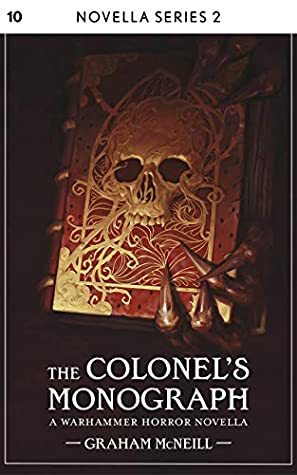
There was a question, extant in publishing in the 1990s, that I think I can now answer: who (or what) killed horror? Back in the 1980s, on the back of the huge success of Stephen King, Clive Barker, James Herbert and Peter Straub, horror was the big genre, with publishers greenlighting pretty well everything calculated to scare the reader.
And then, horror died. The readers stopped buying, the publishers stopped publishing and those writers who had started off in the genre had to find another outlet for their talents – or another career entirely. The usual reason given for the sudden collapse of the market was over saturation: too many books by too many mediocre authors. But that has scarcely been a problem for chick lit, or detective fiction so why did horror fiction crash?
I think it was because, for horror to be truly frightening, there has to be an underlying belief, on the part of the writer as well as the reader, that there is something worse than dying. There has to be consequences for moral choices that transcend merely pain and suffering, which, however bad, will terminate in death, and a sense of the possibility that we, as human beings, can fall into an eternal state that cuts us off completely from what we are and what we should be. For horror to work, there has to be a profound sense that, while human beings enter this world as human beings, it is possible for us to leave it as creatures anywhere on a hierarchy from the basest and most depraved to the highest and most exalted, and that these possibilities carry on after death. For a horror that is based purely on this world becomes, in the end, nothing more than torture porn, variations on the suffering that can be inflicted on to the physical body and a mind that is conceived as nothing more than an emanation of the physical. As such, horror loses its horror, for death brings down the curtain on all suffering and cuts every story, well, dead.
This is exactly what happened with the decline and fall of the horror genre: it devolved into variations on how to cause pain, with Clive Barker’s Cenobites representing the terminal perfection of this view of horror: pain as ecstasy, horror devolved into a sado-masochistic forever.
But in the Warhammer 40k universe, there really are things that are worse than dying. Accepting the premises of the universe, with its pervasive dread of a corruption that can continue far past death itself, there is the possibility of reworking the necessary tropes to make horror work, to return it to its Victorian prime, and I’m pleased to say that Graham McNeil takes the opportunity in his stride. Indeed, with the nods to M.R. James, doyen of Victorian ghost fiction, in the book, it’s clear that he knows exactly what he’s doing in The Colonel’s Monograph. There are worse things than dying and McNeil lets that deepening dread seep through the controlled prose of this taut novella. A fine addition to the 40k universe.
The post Adventures in Bookland: The Colonel’s Monograph by Graham McNeil appeared first on Edoardo Albert.
York Festival of Ideas

Paul Gething and I are talking Warrior and all things Anglo-Saxon at 1pm on Sunday 7 June @YorkFestofIdeas. It’s an online webinar so anyone can attend (and see what we look like after 10 weeks without haircuts!). Book tickets here: http://yorkfestivalofideas.com/2020-online/calendar/warrior-life/#yorkideas
The post York Festival of Ideas appeared first on Edoardo Albert.
May 18, 2020
Warrior – Out Now in Paperback

Warrior: A Life of War in Anglo-Saxon Britain is out now in paperback. The Bookseller called it ‘enthralling…brilliantly written‘. The Spectator said it ‘reveals the disruptive and imaginative force of archaeology‘. Find out what they mean, and how the bones of an anonymous warrior excavated near Bamburgh Castle in Northumberland can reveal the deep foundations of Britain. Get it from Amazon and other good booksellers.
The post Warrior – Out Now in Paperback appeared first on Edoardo Albert.
February 4, 2020
Adventures in Bookland: Path of the Dark Eldar by Andy Chambers
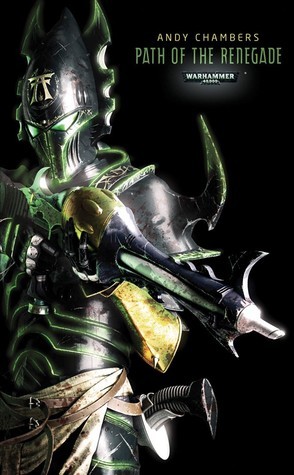
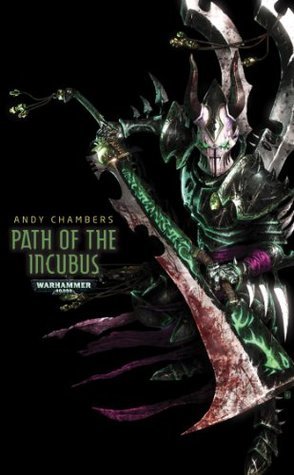
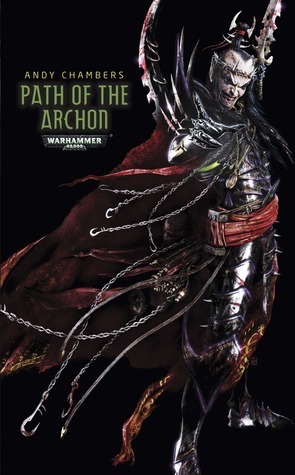
So, you’re a writer for hire and a publishing company, let’s say they’re called the Black Library, get in contact saying they want you to write a trilogy of novels.
‘I’ll see if I can fit you in,’ you say, when what you actually mean is, ‘Thank God, now I’m not going to have to moonlight as an Amazon delivery man.’
And then you get your brief.
Turns out, you’ve got to write a trilogy of novels in which the heroes are a bunch of psychopathic interstellar elves who don’t so much get off on causing pain and death but actually need to do so in order to stop themselves being dragged down the insatiable maw of the hermaphroditic, but mostly female, goddess of excess. These are interstellar elves who take seriously Aleister Crowley’s dictum, ‘Do what thou wilt shall be all of the law.’
So, how do you write about them? Do you take them seriously as creatures dedicated to pain and excess? Do you make them the monsters they truly are? Trying to think of an example in a human context, the obvious – Nazis, serial killers, etc – come to mind but a better example for the truly stomach churning nature of these elves of excess would be Ian Watkins, the child-molesting lead singer of the Lost Prophets, since he combined both the rock star glamour and the truly disgusting determination to plunge to the depths of what is possible in human depravity.
Andy Chambers, thankfully, decided not to go there. I don’t think I could have born a trilogy in the company of creatures as depraved as that. So, yes, they are Dark Eldar, sadists and masochists, but the torture is largely off page and the machinations brought to the fore, so the trilogy can be enjoyed as a ruthless political thriller, House of Cards in the stars. As such, Chambers creates a cast of amusingly ruthless characters, illuminates – as far as is possible – the Dark City, Commorragh, where the Dark Elves dwell, and takes us on thrilling journeys along the webway, the skein of twisted reality that slides between our world and the Warp, where the Dark Eldar hide from that thirsty god who desires their souls.
So, a thoroughly enjoyable romp among the stars in the company of pschyo elves, rather than a face plant into depravity. Phew!
January 22, 2020
Adventures in Bookland: Invasion by Duncan Cameron

The author, Duncan Cameron, makes his bold claim right up there in the title and subtitle: Invasion: the forgotten French bid to conquer England. So the question arises, after 266 pages does Cameron succeed in convincing the reader that the attempts by the Valois kings to turn back English aggression during the successive reigns of Edward III (who ruled from 1327 to 1377) and Richard II (1377 to 1399) actually amounted to a serious attempt to invade and conquer England? Not really. Perhaps a more accurate title for the book, and one that indicates where its real strengths lie, would be By Fire and Sea: the unsung role of naval and marine warfare in the first decades of the Hundred Years’ War.
For it is certainly true that, bedazzled by the great Edwardian victories at the Battle of Crécy and the Siege of Calais, and the even more remarkable victory of Edward’s son, the Black Prince, at the Battle of Poitiers in 1356 which resulted in the capture of the French King, Jean II, and his youngest son Philip, contemporary chroniclers and later historians have tended to emphasise the land battles of these early decades of the Hundred Years War. While not surprising – Edward’s forces at the Battle of Neville’s Cross also managed to take captive King David II of Scotland, holding him captive and for ransom until 1357, meaning that for a year Edwardian England held the kings of France and Scotland captive – Cameron makes clear in his book that cross-Channel raiders played a much larger part in the French resistance to the destructive English raids, the chevauchée, which were a key element in Edward’s strategy, than has generally been acknowledged.
Faced with English armies burning and looting across northern France with the strategic aim of rendering the French incapable of fighting back, successive French kings authorised destructive counter chevauchée, employing mercenary crews of Genoan and Monegasque sailors and marines to man oared galleys as the spearheads for these amphibious raids on the ports of southern England. Some towns such as Winchelsea that had previously waxed wealthy on the proceeds of the lucrative wine trade with Gascony (a French province that, by the complicated laws of inheritance, was actually the personal property of Edward III) never recovered from the devastation caused by these combined naval attacks, the Genoans and Monegasque marines storming ashore, burning and looting, while French cogs, the mainstay of North Sea trade, waited at anchor to take all the looted goods home. The final French ‘invasion’ of England never actually happened, with the main invasion force defeated by weather and logistics, thus making the big reveal at the end something of a damp squib. But the journey there reveals a fascinating and little-known side to 14th-century warfare.
Adventures in Bookland: Robert the Bruce by Stephen Spinks

For most
people in England, and not a few in Scotland, the name Robert the Bruce will
evoke vague memories of Bannockburn, some even vaguer recollections of a story
about a spider attempting to spin her web and, for those of a certain age, attempts
to unpick the historical from the completely made up in the portrayal of Robert
in Braveheart (no, he did not betray William Wallace and he probably did
not fight against him). So the publication of this new biography of Robert by
Stephen Spinks is a welcome chance to bring the man who ensured Scotland’s
independence for 400 years out from the shadows of forgetting and Hollywood
mythmaking.
Spinks has written a classic narrative history of Robert’s life, beginning with a necessary preamble into the historical situation leading up to his birth – during which the relations between Scottish and English crowns had been most amicable – and taking in the disaster that struck the Scottish succession in 1286 when Alexander III died, falling from a cliff, his sons having predeceased him, leaving as heir his three-year-old granddaughter, Margaret, the Maid of Norway. The crisis metastasized when Margaret herself died, aged seven, on her way back to Scotland. Into this vacuum, the Scots overmighty neighbour, Edward I, King of England, began to assert his own claim to be overlord of the Scots. This claim, which in Edward’s mind rapidly became his right, was based on Geoffrey of Monmouth’s medieval bestseller, the History of the Kings of Britain – a work of supposed history in which Geoffrey enthusiastically filled gaps with the products of his fertile imagination – that found the origin of the Scottish and English crowns in the sons of a refugee Trojan prince, Brutus. Edward based his claim on the wearer of the Scottish crown owing allegiance to the wearer of the English crown on account of the latter being descended from the eldest son of Brutus. Edward, one of the most formidable warriors of his time, set about claiming his birthright, inititiating the wars for Scottish independence that would continue for all of Robert’s adult life.
It was a vivid time of double crossing, battles and personalities who resound down the centuries and Spinks does an excellent job of bringing them all to life, from Edward’s bulldozer tenacity to Robert’s youthful ruthlessness and his maturing into a soldier, king and statesman of genius. By setting the scene carefully, Spinks makes the many changes of allegiance understandable within the context of the times, before leading up to the climactic Battle of Bannockburn, when Robert, seizing an opportunity gifted by new intelligence, switched from his preferred guerrilla tactics to a sudden, unexpected and devastating defeat for the English, now marching under the banner of Edward’s less gifted but still determined son, Edward II. The war did not end with Bannockburn, and Spinks maintains the narrative as he tells of Robert’s long, and eventually successful, struggle to have his claim as King of Scots recognised by the English and Christendom in general. Highly recommended.
December 20, 2019
Only 16 per cent of autistic adults are in paid work
My eldest son, Theo, is autistic. He has just turned 18 and, a year ago, we were all gloomily contemplating the statistic that only 16 per cent of autistic people are in paid employment. We’re not talking here about the small minority of autistic people who are non-verbal and require care, but the much larger group – one in a hundred of the population – who have unique thinking skills that could provide so much to employers and co-workers.
Thankfully, Theo was given a chance through the work of Ambitious About Autism, who arranged a literally life-changing internship for him at the Department of Transport. Theo’s three weeks working there showed him that he really could fit in to a work environment, bringing to it his own particular abilities, and following that internship he was able to secure a transport planning apprenticeship with Hounslow Council. As part of the work of Ambitious About Autism, Theo has appeared in the short film they made as part of their campaign to persuade employers to give autistic people a chance, starring alongside the Channel 4 broadcaster Jon Snow. The video is below. I could not be more proud of him. Please watch and share.
Ambitious About Autism

